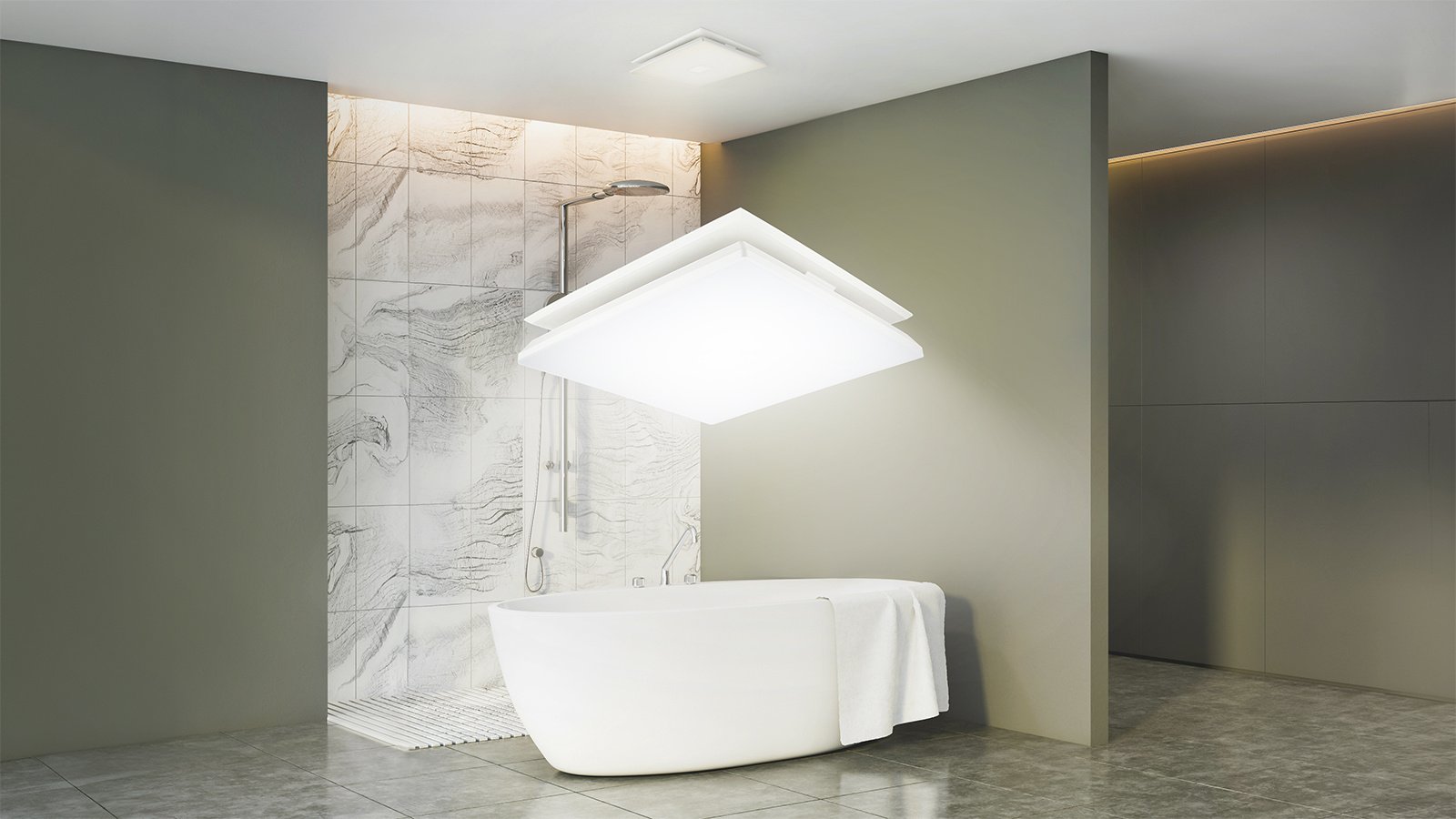
Ventilation Strategies
Choosing the proper ventilation approach for healthier homebuilding
For home builders and contractors seeking to deliver healthy homes, installing powerful ventilation that assures good indoor air quality and energy efficiency is a must. At a recent homebuilding trade conference, many top green builders ranked the indoor air we breathe just as important to our health as the food we eat.
Exhaust, supply or balanced ventilation: Which strategy is best?
An effective indoor air quality solution requires more than a single exhaust fan in the bathroom. There are three primary strategies for controlled ventilation: exhaust, supply, and balanced systems.
Exhaust, supply or balanced ventilation: Which strategy is best?
An effective indoor air quality solution requires more than a single exhaust fan in the bathroom. There are three primary strategies for controlled ventilation: exhaust, supply, and balanced systems.
Exhaust Ventilation
Exhaust ventilation removes pollutants at the source. An inexpensive and simple approach to ventilating a house, it works by drawing up and forcing air out of the home. A common example would be an exhaust fan in a bathroom or kitchen. Exhaust fans depressurize the home’s interior, which then gains make-up air through passive vents such as air leaks in the building envelope.
Because this strategy only actively exhausts air, it is not recommended in hot or humid climates. Since any make-up air is gained passively, that air may be humid, contain pollutants or be too cold, leading to energy-rating penalties for the home and discomfort for occupants.
For more information, visit our exhaust fan solutions.
Supply Ventilation
Supply-only ventilation dilutes pollutants. Another simple and inexpensive approach, this strategy uses a supply fan to pressurize a home and actively brings fresh outdoor air inside. Supply ventilation offers better control over pollutants present in incoming air, as they only obtain outdoor air through specified vents. Pressurizing the house more readily forces out combustion gases and other contaminants.
The downside? Supply ventilation struggles with conditioning or removing moisture from incoming air, and can raise heating and cooling costs due to leakage. This is particularly prevalent in older homes where building envelopes are more porous compared to today’s more tightly sealed energy efficient structures.
For more information, visit our supply ventilation solutions.
Balanced Ventilation
Indoor environmental professionals and air quality experts generally agree that a balanced ventilation strategy is best. Balanced ventilation works by both actively exhausting polluted indoor air and actively drawing in fresh, outdoor air in a balanced, controlled ratio.
When employing a balanced approach using an energy recovery ventilator, incoming air can be conditioned and dehumidified - saving on heating and cooling expenses - while improving indoor air quality at the same time. Since a balanced system uses more fans and ducts than the supply or exhaust approaches, the price tag is higher. However, balanced ventilation is appropriate for all climate zones and will deliver the best indoor air quality, by far.
For more information, visit our energy recovery ventilator solutions.

Exhaust Ventilation
Exhaust ventilation removes pollutants at the source. An inexpensive and simple approach to ventilating a house, it works by drawing up and forcing air out of the home. A common example would be an exhaust fan in a bathroom or kitchen. Exhaust fans depressurize the home’s interior, which then gains make-up air through passive vents such as air leaks in the building envelope.
Because this strategy only actively exhausts air, it is not recommended in hot or humid climates. Since any make-up air is gained passively, that air may be humid, contain pollutants or be too cold, leading to energy-rating penalties for the home and discomfort for occupants.

Supply Ventilation
Supply-only ventilation dilutes pollutants. Another simple and inexpensive approach, this strategy uses a supply fan to pressurize a home and actively brings fresh outdoor air inside. Supply ventilation offers better control over pollutants present in incoming air, as they only obtain outdoor air through specified vents. Pressurizing the house more readily forces out combustion gases and other contaminants.
The downside? Supply ventilation struggles with conditioning or removing moisture from incoming air, and can raise heating and cooling costs due to leakage. This is particularly prevalent in older homes where building envelopes are more porous compared to today’s more tightly sealed energy efficient structures.

Balanced Ventilation
Indoor environmental professionals and air quality experts generally agree that a balanced ventilation strategy is best. Balanced ventilation works by both actively exhausting polluted indoor air and actively drawing in fresh, outdoor air in a balanced, controlled ratio.
When employing a balanced approach using an energy recovery ventilator, incoming air can be conditioned and dehumidified - saving on heating and cooling expenses - while improving indoor air quality at the same time. Since a balanced system uses more fans and ducts than the supply or exhaust approaches, the price tag is higher. However, balanced ventilation is appropriate for all climate zones and will deliver the best indoor air quality, by far.
Explore the Lineup
-

Ventilation Fans
Learn More -

Energy Recovery Ventilators
Learn More -

Air Purification
Learn More -

Smart Controls
Learn More